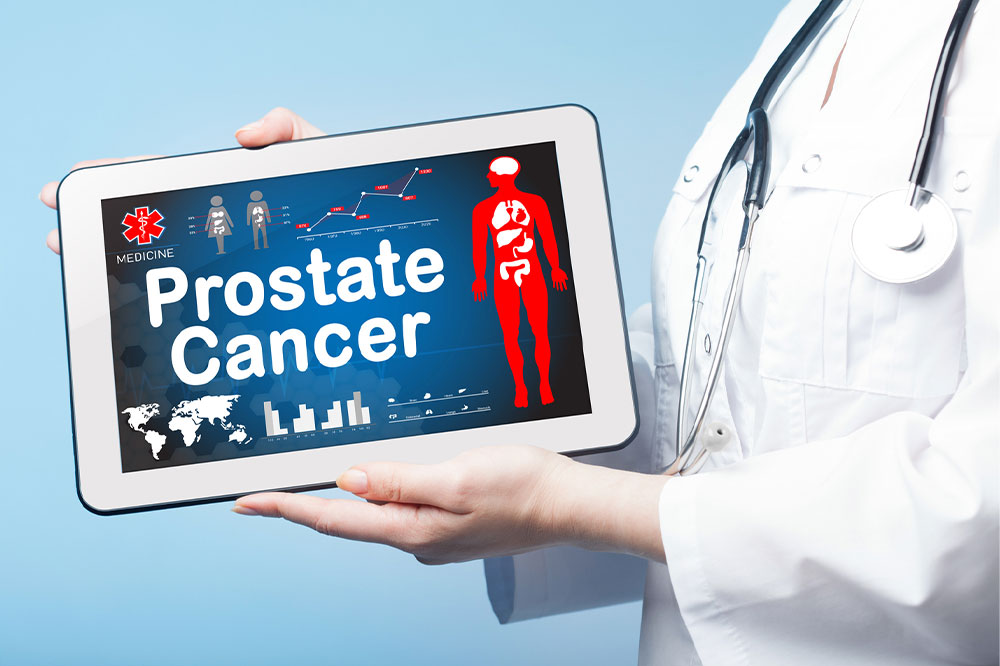3 tips to help prevent and manage prostate cancer

The prostate gland, found below the bladder, helps make and transport semen. Prostate cancer occurs when cells in the gland grow uncontrollably, eventually forming a tumor. It is the second leading cause of cancer-related death among men in our country. Trouble urinating and blood in the urine are common symptoms, and the condition is curable if detected early. Here are the treatments, meal plans, and lifestyle tips that help prevent and manage prostate cancer:
Get the right treatment
Treatment is vital to kill harmful cells and stop the disease from spreading. Popular treatment options for prostate cancer are:
- Xofigo
It is an FDA-approved option for treating metastatic prostate cancer in cases where the disease has spread to the bones but not other organs. Xofigo binds with bone minerals, delivering radiation directly to bone tumors. Doing so reduces damage to the nearby normal tissues. Its most common side effects include vomiting, nausea, and diarrhea. - Enzalutamide
It helps treat prostate cancer in men, where cancer has spread to other body parts. Enzalutamide is mainly used for those who do not get better with hormone therapy or other surgical treatments for lowering testosterone levels. It works by blocking the effects of a male reproductive hormone called androgen, which, in turn, stops cancer growth and further spread.
Studies indicate that using Xofigo and enzalutamide simultaneously might produce better results in certain types of prostate cancer. But one must consult a doctor before using any of these treatment options.
Follow healthier food habits
While nutrition cannot cure prostate cancer, it can help manage the symptoms and lower the risk. The best foods are:
- Red fruits and vegetables
Red fruits and vegetables like tomatoes and watermelons have a powerful antioxidant called lycopene. Many research studies point out that lycopene reduces the progression and growth of prostate cancer cells. However, picking ripened red fruits and veggies is essential as the antioxidant is known to be present in higher amounts in them. - Protein-rich foods
Individuals undergoing cancer treatment often feel tired and low on energy. Protein is essential as it helps energize the body and build muscle. The best protein-based foods include beans like kidney beans and pinto beans and different varieties of nuts. Lean poultry like fish and turkey are also suitable options. - Soybeans
The nutrient isoflavone has many health benefits and may also be linked to lower cancer risk. One can find this vital nutrient in tofu made from soybeans or soy products. Isoflavone is also present in chickpeas, lentils, and peanuts. - High-fiber foods
Research shows that high-fiber foods help lower overall calorie intake, which can help reduce the risk of cancer. Fiber also has other health benefits. For instance, those who include more fiber in their everyday meals have lungs that work better. Fiber-rich foods include peas, lentils, baked beans, chia seeds, quinoa, pears, and broccoli. - Coffee
S everal research studies have shown that caffeine can lower the risk of several forms of cancer, including prostate cancer. This is mainly because of its potent anti-inflammatory and antioxidant properties. Besides helping with cancer, coffee can boost one’s energy levels and fight other diseases.
Individuals must avoid the following foods to lower prostate cancer risk and manage the condition:
- Red and processed meat
A meal plan with high amounts of red meat is known to increase the risk of prostate cancer as they contain HCAs, a substance capable of producing cancer in living tissues. HCAs develop when one cooks red meat at high temperatures, such as grilling or broiling. Pork, beef, hot dogs, and sausages are some foods to avoid. - Fatty foods
R esearch has shown a strong link between saturated fats and an increased risk for prostate cancer. These fats are commonly found in butter, cheese, and meats like bacon and beef. Other typical sources of saturated fats include pastries, candies, and many types of tinned or pre-packaged foods. One must ensure not to add high amounts of these to the meal plan.
Make the right lifestyle modifications
Besides getting the proper treatment and eating the right foods, certain lifestyle modifications also help manage and prevent prostate cancer:
- Regular exercise
Consistent workouts help a person get out of their sedentary lifestyle and stay active, which goes a long way in preventing cancer. Activities like swimming, bicycling, running, and walking for just 30 minutes a day can boost metabolism, lower the risk of cardiovascular diseases, and improve overall health. - Frequent intercourse
A major study has proven that men who frequently ejaculate, either with or without their partner, are two-thirds less likely to be susceptible to prostate cancer. It is also theorized that ejaculation clears the body of toxins that could eventually cause inflammation. - Lower stress
Those dealing with chronic diseases like cancer often suffer from stress and anxiety, which can affect their quality of life. Therefore, it is essential to calm the mind and reduce stress levels. Mindful practices like breathing exercises help destress and rejuvenate the body by enabling better blood circulation.
Prostate cancer is sometimes called the “disease of aging.” While age, race, and genes are not something one can change, food habits and lifestyles are modifiable to stay healthy.






